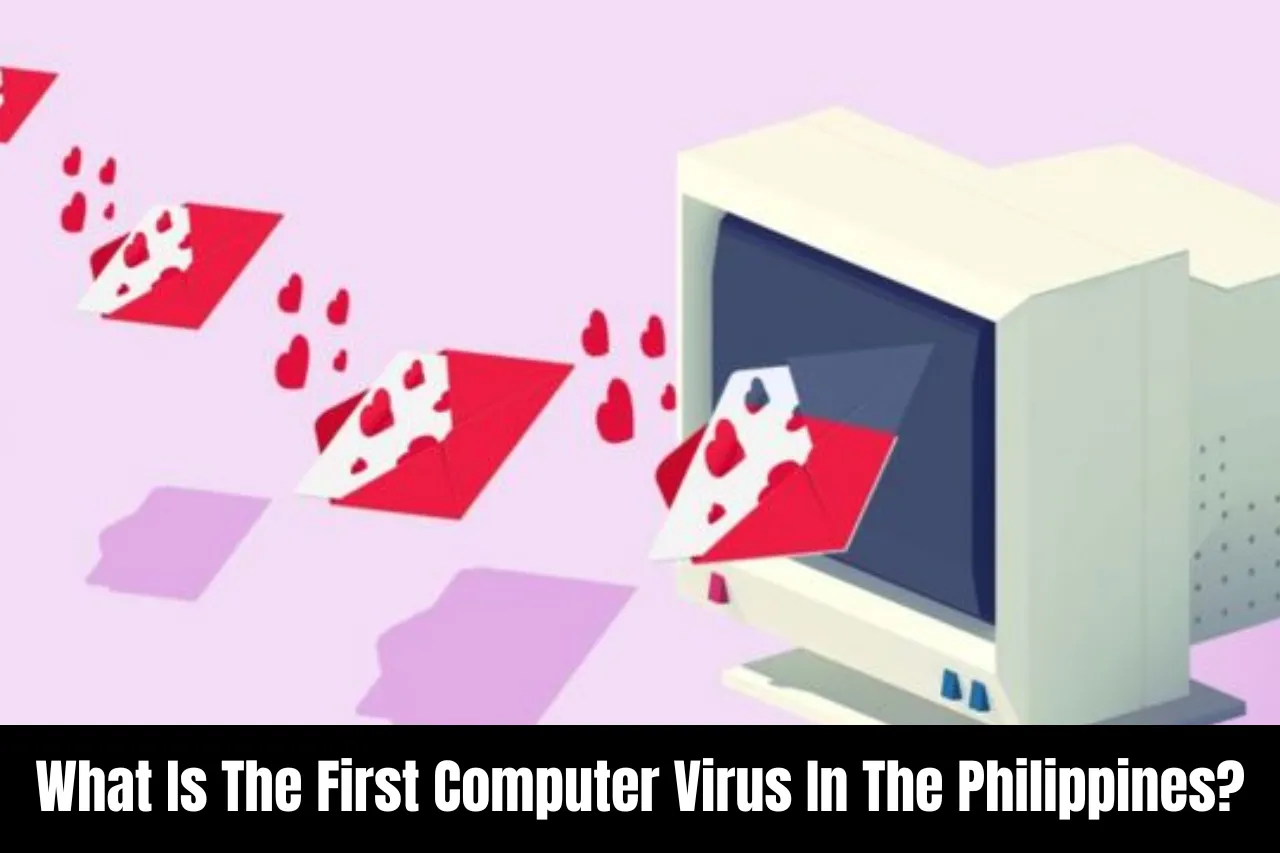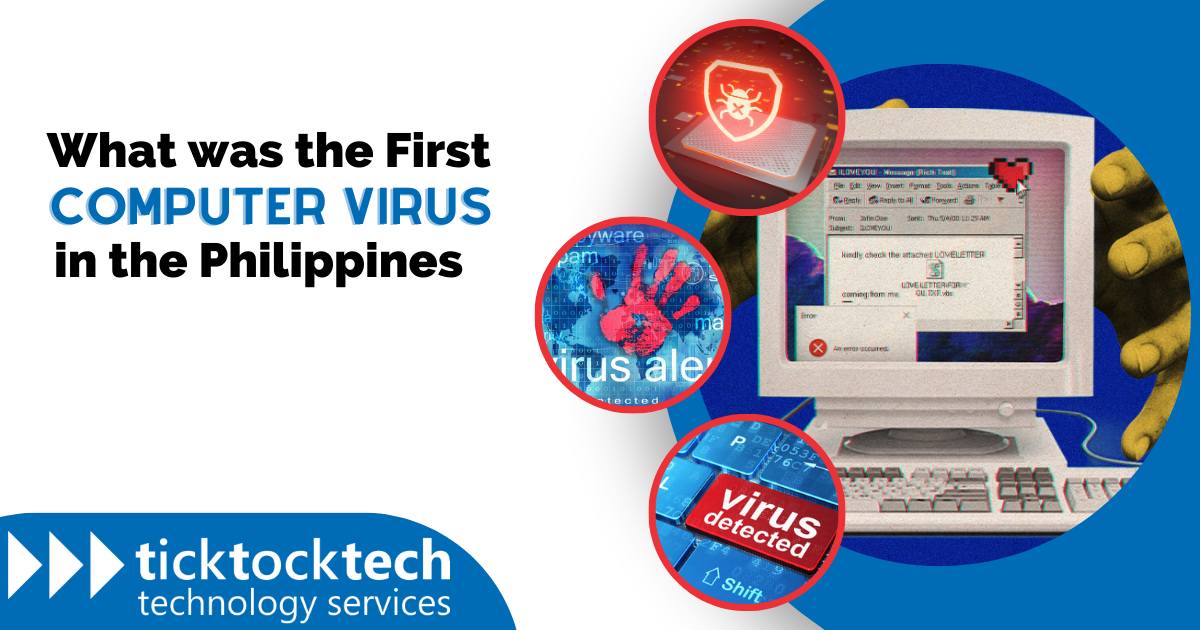The Notorious Beginnings: The First Philippine Computer Virus
What was the first virus in the Philippines? The Mariposa virus, discovered in March 1999, holds the infamous title of being the first computer virus to originate in the Philippines.
The Mariposa virus was a macro virus that targeted Microsoft Word documents. It spread rapidly through email attachments, infecting computers worldwide. The virus displayed a message that read "Mariposa" and could cause damage to infected systems.
The Mariposa virus highlighted the growing threat of computer viruses and the need for robust antivirus software. It also marked a turning point in the Philippines' involvement in the global cybersecurity landscape.
In the years since the Mariposa virus, the Philippines has become a major player in the cybersecurity industry. Filipino cybersecurity experts have developed innovative solutions to combat the evolving threat of cyberattacks.
The First Virus in the Philippines Computer
The Mariposa virus, discovered in March 1999, holds the infamous title of being the first computer virus to originate in the Philippines. This event marked a turning point in the country's involvement in the global cybersecurity landscape.
- Origin: Mariposa was the first virus to be developed in the Philippines.
- Type: It was a macro virus that targeted Microsoft Word documents.
- Impact: The virus spread rapidly through email attachments, infecting computers worldwide.
- Legacy: Mariposa highlighted the growing threat of computer viruses and the need for robust antivirus software.
- Response: The Philippines has since become a major player in the cybersecurity industry, developing innovative solutions to combat cyber threats.
The Mariposa virus serves as a reminder of the importance of cybersecurity and the need for constant vigilance against cyber threats. It also underscores the Philippines' growing role in the global fight against cybercrime.
Origin
The Mariposa virus holds the distinction of being the first computer virus to be developed in the Philippines. This event marked a significant turning point in the country's involvement in the global cybersecurity landscape.
- Cybersecurity Awareness: The Mariposa virus raised awareness about the growing threat of computer viruses and the importance of cybersecurity.
- Technological Innovation: The virus prompted Filipino cybersecurity experts to develop innovative solutions to combat cyber threats.
- Global Recognition: Mariposa put the Philippines on the map of the global cybersecurity community.
- Cybersecurity Industry Growth: The virus contributed to the growth of the cybersecurity industry in the Philippines.
The Mariposa virus serves as a reminder of the importance of cybersecurity and the need for constant vigilance against cyber threats. It also underscores the Philippines' growing role in the global fight against cybercrime.
Type
The Mariposa virus, the first computer virus to originate in the Philippines, was a macro virus that targeted Microsoft Word documents. This type of virus infects macro programs, which are sets of instructions that automate tasks in software applications.
- Exploiting Automation: Macro viruses exploit the automation capabilities of software applications to spread and execute malicious code.
- Email Propagation: Mariposa spread primarily through email attachments, infecting computers when users opened infected Word documents.
- Targeted Attacks: Macro viruses can be designed to target specific software applications or versions, making them more effective against certain systems.
- Early Cybersecurity Threats: Macro viruses were among the first types of viruses to pose a significant threat to computer users.
The Mariposa virus highlighted the need for robust antivirus software and user education about the dangers of opening suspicious email attachments. It also marked the beginning of a trend of increasingly sophisticated cyber threats.
Impact
The rapid spread of the Mariposa virus through email attachments was a significant factor in its impact as the first virus to originate in the Philippines. This mode of transmission allowed the virus to reach a global audience, infecting computers worldwide.
- Exponential Growth: Email attachments provided a fertile ground for the virus to spread exponentially, reaching a large number of potential victims in a short period.
- Lack of Awareness: At the time of Mariposa's emergence, many computer users were unaware of the risks associated with opening email attachments, making them more susceptible to infection.
- Global Reach: Email's global reach facilitated the virus's worldwide distribution, allowing it to transcend geographical boundaries and infect computers in different countries.
The impact of the Mariposa virus highlights the importance of cybersecurity education and the need for robust email security measures. It also underscores the interconnected nature of the global digital landscape and the potential for cyber threats to spread rapidly across borders.
Legacy
The Mariposa virus, as the first computer virus to originate in the Philippines, played a crucial role in highlighting the growing threat of computer viruses and the urgent need for robust antivirus software.
The rapid spread and impact of Mariposa demonstrated the potential for viruses to cause widespread damage and disruption. It raised awareness among computer users and organizations about the importance of cybersecurity and the need for proactive measures to protect their systems.
The legacy of Mariposa lies in its role as a catalyst for the development and adoption of robust antivirus software. The virus prompted individuals and businesses to invest in antivirus solutions, leading to a more secure computing environment.
Today, antivirus software is an essential component of cybersecurity defense systems, protecting computers from a wide range of viruses and malware. The legacy of Mariposa continues to remind us of the importance of cybersecurity vigilance and the need for continuous innovation in antivirus technologies.
Response
The emergence of the Mariposa virus, the first computer virus to originate in the Philippines, marked a turning point for the country's involvement in the cybersecurity landscape. In the years that followed, the Philippines has transformed into a major player in the cybersecurity industry, driven by a commitment to developing innovative solutions to combat cyber threats.
- Cybersecurity Expertise: Filipino cybersecurity experts have played a significant role in developing cutting-edge antivirus software and security solutions, contributing to the global fight against cybercrime.
- Research and Development: The Philippines has invested in research and development initiatives focused on cybersecurity, fostering innovation and the creation of new technologies.
- Public-Private Collaboration: The Philippine government and private sector have collaborated to establish cybersecurity frameworks and policies, promoting a secure and resilient digital environment.
- Global Recognition: Filipino cybersecurity professionals have gained international recognition for their expertise and contributions to the industry.
The response of the Philippines to the Mariposa virus highlights the country's resilience and commitment to cybersecurity. The development of innovative solutions and the emergence of a skilled workforce have positioned the Philippines as a major player in the global cybersecurity industry.
FAQs on "the First Virus in the Philippines Computer"
This section addresses frequently asked questions and misconceptions regarding the first virus to originate in the Philippines, providing informative answers based on credible sources.
Question 1: What was the name of the first virus in the Philippines?
Answer: The Mariposa virus holds the distinction of being the first computer virus to be developed in the Philippines.
Question 2: When was the Mariposa virus discovered?
Answer: The Mariposa virus was discovered in March 1999.
Question 3: How did the Mariposa virus spread?
Answer: The Mariposa virus primarily spread through email attachments, infecting computers when users opened infected Microsoft Word documents.
Question 4: What type of virus was Mariposa?
Answer: Mariposa was a macro virus, which infects macro programs within software applications.
Question 5: What impact did the Mariposa virus have?
Answer: The Mariposa virus caused widespread infections and highlighted the growing threat of computer viruses, leading to increased awareness about cybersecurity.
Question 6: What is the legacy of the Mariposa virus?
Answer: The Mariposa virus serves as a reminder of the importance of cybersecurity vigilance and the need for robust antivirus software. It also marked the beginning of the Philippines' involvement in the global cybersecurity landscape.
Conclusion on "The First Virus in the Philippines Computer"
The Mariposa virus, the first computer virus to originate in the Philippines, marked a significant turning point in the country's cybersecurity landscape. It highlighted the growing threat of computer viruses and the need for robust antivirus software, leading to increased awareness and investment in cybersecurity measures.
The legacy of the Mariposa virus continues to shape the Philippines' involvement in the global cybersecurity industry. Filipino cybersecurity experts have developed innovative solutions and contributed to the fight against cyber threats. The country's commitment to cybersecurity has positioned it as a major player in the industry.
The lessons learned from the Mariposa virus serve as a reminder of the importance of cybersecurity vigilance, collaboration, and continuous innovation. As technology advances and new threats emerge, it is essential to remain proactive in protecting our digital systems and data.



Detail Author:
- Name : Junius Gaylord
- Username : greenholt.francisca
- Email : watsica.zoila@hotmail.com
- Birthdate : 1978-01-19
- Address : 469 Wendy Mill Apt. 840 South Beryl, OK 89565
- Phone : +1-360-597-5281
- Company : Watsica-Braun
- Job : Database Administrator
- Bio : Rerum id facilis et porro. Eum aut molestias atque assumenda ab. Optio numquam asperiores molestiae mollitia provident rerum nesciunt quasi. Rem animi dolor iste eaque nostrum voluptates molestiae.
Socials
twitter:
- url : https://twitter.com/dameon_real
- username : dameon_real
- bio : Optio modi libero inventore provident odio. Sunt ratione est delectus eos praesentium quisquam est. Facere et praesentium dolorem.
- followers : 3974
- following : 1675
facebook:
- url : https://facebook.com/corkeryd
- username : corkeryd
- bio : Eos est enim officiis adipisci.
- followers : 6371
- following : 2512
tiktok:
- url : https://tiktok.com/@corkeryd
- username : corkeryd
- bio : Qui voluptate aut porro.
- followers : 4900
- following : 2186